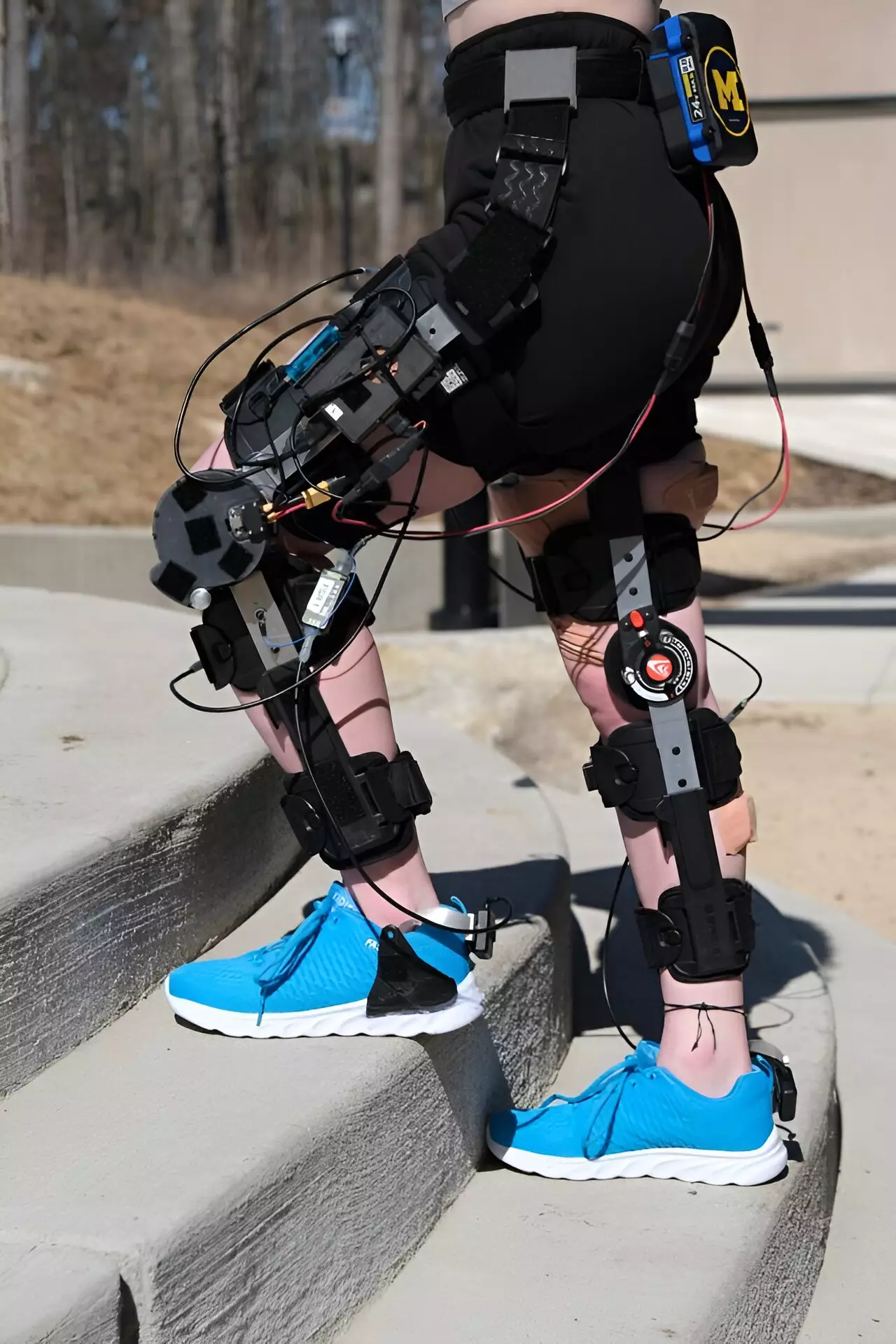At the forefront of ergonomic innovation, a team of researchers at the University of Michigan has developed an advanced knee exoskeleton designed to mitigate fatigue and enhance lifting safety for workers in demanding physical environments. Traditional lifting aids, such as back braces and exoskeletons focused on the torso, often fall short of addressing the root causes of injury linked to improper lifting technique. This article delves into the ingenuity behind the knee exoskeleton and its potential implications for industries like construction and manufacturing.
Many workers regularly face the challenge of lifting heavy objects, leading to significant physical strain and potential injury, particularly in their backs. Conventional lifting aids, primarily back exoskeletons that employ motors or springs, often unintentionally promote unsafe lifting postures by providing support for the upper body rather than ensuring proper squat mechanics. Such devices can also be cumbersome and require deactivation for movement not associated with lifting, leading users to risk injury during routine tasks.
Research has shown that reliance on back support can inadvertently encourage bad habits, like excessive bending and twisting of the spine. This omnipresent issue in rugged industries highlights the urgent need for alternative solutions that prioritize safe lifting techniques while preserving ease of movement and comfort.
Addressing these challenges, the University of Michigan’s knee exoskeleton uniquely focuses on supporting the quadriceps muscles, which play a crucial role in maintaining proper squat lifting form. By engaging the lower body, this design revolutionizes lifting safety, as proper engagement of the legs allows for stronger, safer lifts. Professor Robert Gregg, the leading researcher on the project, emphasizes that this device does not simply brace the back but actively fortifies the legs to sustain an anatomically sound lifting posture.
Study participants wearing these innovative knee exoskeletons participated in rigorous lifting tests, which included handling a 20-pound kettlebell under a variety of conditions—lifting from the ground, traversing flat surfaces, and navigating inclines and stairs. The results showcased a remarkable retention of lifting speed, with participants only showing a 1% decrease in speed while fatigued compared to a staggering 44% without the exoskeleton. These statistics underscore the device’s potential to maintain productivity levels while promoting worker safety.
Feedback from study participants was overwhelmingly positive, with many reporting increased satisfaction while performing various tasks, especially in maintaining lifting form. Notably, while participants expressed minor dissatisfaction when walking on level ground, this aligns with expectations given that the quadriceps require less assistance during such straightforward movements.
The knee exoskeleton’s structure incorporates advanced motor systems and precise gearing to afford users a natural gait. Crucially, the innovative software employed within the exoskeleton adapts continuously, gauging user movements at an impressive rate of 150 measurements per second from several body angles. This real-time assessment enables the device to provide tailored assistance, smoothing transitions between activities and reducing the risk of unexpected movements that could lead to falls or accidents.
As industries evolve, so too must the strategies employed to safeguard workers’ health. The knee exoskeleton presents a progressive step toward enhancing ergonomic standards in physically demanding jobs. By focusing on the biomechanics of lifting and maximizing the legs’ power, it alleviates pressure on the back while ensuring workers adhere to optimal lifting techniques.
The projected cost of future iterations, potentially around $2,000 per pair for mass production, hints at a greater accessibility of this technology for companies keen on investing in workforce safety as a priority. As the researchers seek patent protection and potential industry partners, the anticipation builds around translating this groundbreaking concept into practical applications within workplaces worldwide.
In an era where workplace safety remains paramount, the development of knee exoskeletons at the University of Michigan represents a significant leap forward. By prioritizing lower body support, this innovative technology not only protects workers from injury but also enhances their overall productivity. As industries continue to refine their approaches to ergonomics, the knee exoskeleton could pave the way for improved safety protocols and healthier work environments. The road ahead looks promising, with potential benefits rippling through sectors reliant on manual labor and lifting tasks.

